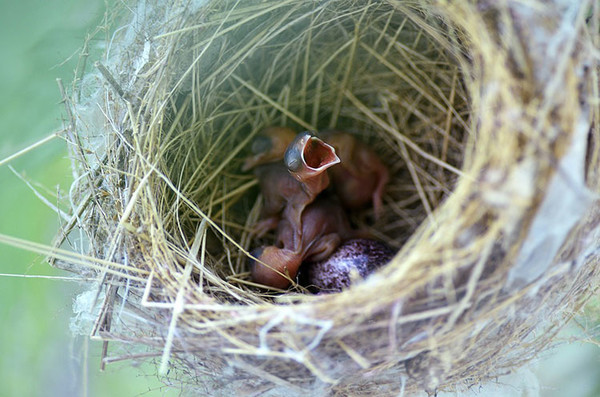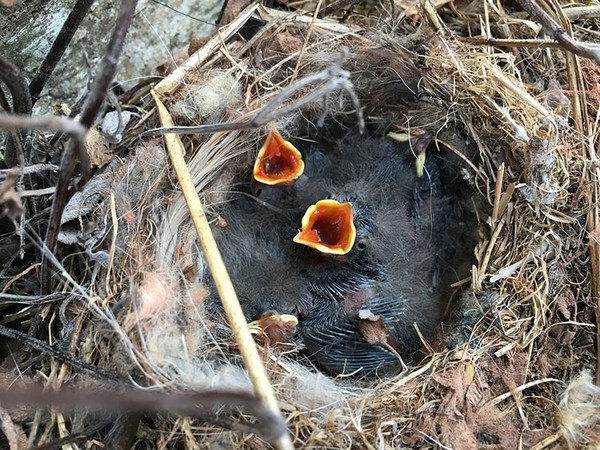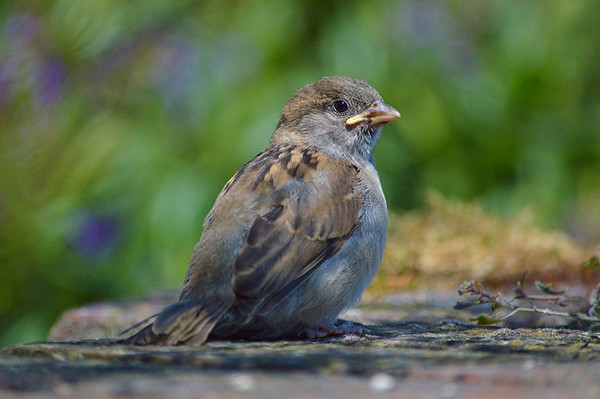 Center for Urban Ecology, Quinta Mazatlan
Center for Urban Ecology, Quinta Mazatlan
Every spring and summer, nature centers and wildlife refuges receive countless phone calls asking the same question: What do I do with the baby bird I found?
The most important thing to do is be patient and assess the situation. The unfortunate truth is that many baby birds are inadvertently kidnapped from their parents simply because a concerned person sprang into action too quickly, thinking they were coming to the rescue. Before taking any action, there are two questions to answer: Is the bird hurt? How old is the bird?
 If the bird is visibly injured you should contact a licensed wildlife rehabilitator. Texas Parks & Wildlife has them listed by county on their website. Signs of injury include obvious wounds (blood), breathing problems, inability to stand, partially closed eyes, and being unable to sustain flight.
If the bird is visibly injured you should contact a licensed wildlife rehabilitator. Texas Parks & Wildlife has them listed by county on their website. Signs of injury include obvious wounds (blood), breathing problems, inability to stand, partially closed eyes, and being unable to sustain flight.
The inability to fly (or inability to fly well) is not always an indicator of a bird being injured. Young birds are unable to fly for varying amounts of time, and early in their air-borne career can be awkward and lack flight stamina. Most songbirds go through three stages of development: hatchling, nestling, and fledgling.
Hatchlings are extremely dependent on their parents. They need to be kept at the right temperature (brooding) and fed often. If you find a hatchling out of a nest, the best solution is to find and return the baby to it. If you cannot find its nest, or reach it, you can make a substitute and place it in the same tree.
Nestlings have their eyes open and more developed feather tracts. As they age, parents may starting bringing them different foods than earlier in their lives. Older Golden-fronted Woodpecker nestlings, for example, are fed more fruits as they mature. If you find a nestling out of the nest, proceed the same way as with a hatchling; try to put it back, or create a makeshift nest in the same tree.
 Fledglings are much more mobile than nestlings, able to walk, hop, and make ungainly flights. If you find a fledgling, do not remove it from the immediate area. Fledglings, despite their gawkiness, are supposed to be out of their nests and exploring the world. They still rely on their parents to feed them, so taking them into your home, or to a local park, effectively cuts them off from their parents’ care. The most you should do, and only if the chick is in immediate danger (such as a cat stalking it), is place the bird in a nearby tree or tall shrub.
Fledglings are much more mobile than nestlings, able to walk, hop, and make ungainly flights. If you find a fledgling, do not remove it from the immediate area. Fledglings, despite their gawkiness, are supposed to be out of their nests and exploring the world. They still rely on their parents to feed them, so taking them into your home, or to a local park, effectively cuts them off from their parents’ care. The most you should do, and only if the chick is in immediate danger (such as a cat stalking it), is place the bird in a nearby tree or tall shrub.
The Migratory Bird Act protects over 1,000 native bird species, meaning that unless you have the appropriate permits, you cannot legally attempt to care for a baby or injured bird. The best ways to help birds long-term are to protect habitats and make our cities safer for them by keeping our cats indoors and working to prevent bird-window collisions.
If you have questions about baby birds or what you can do to help protect birds in your neighborhood, please contact the Center for Urban Ecology at 956-681-3387.













